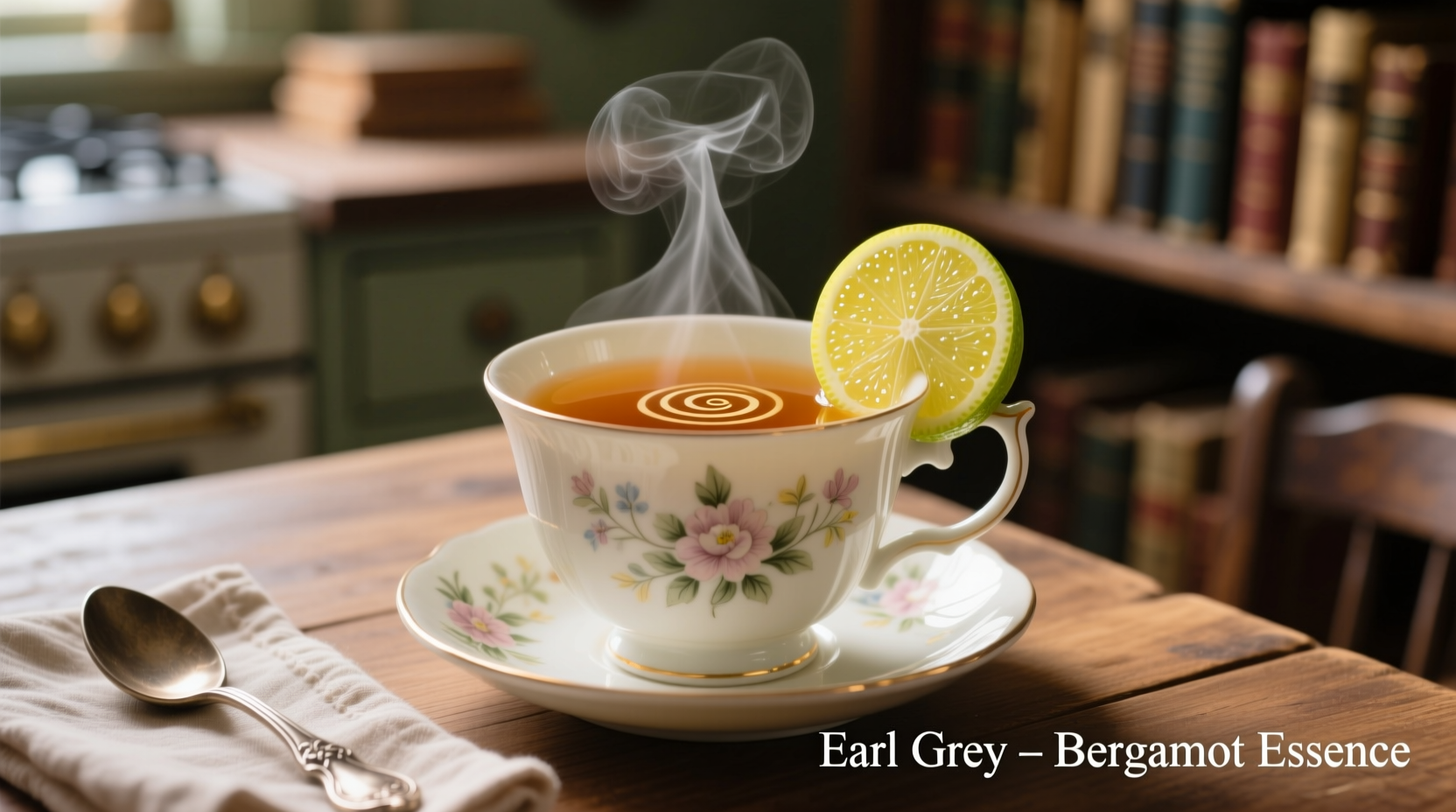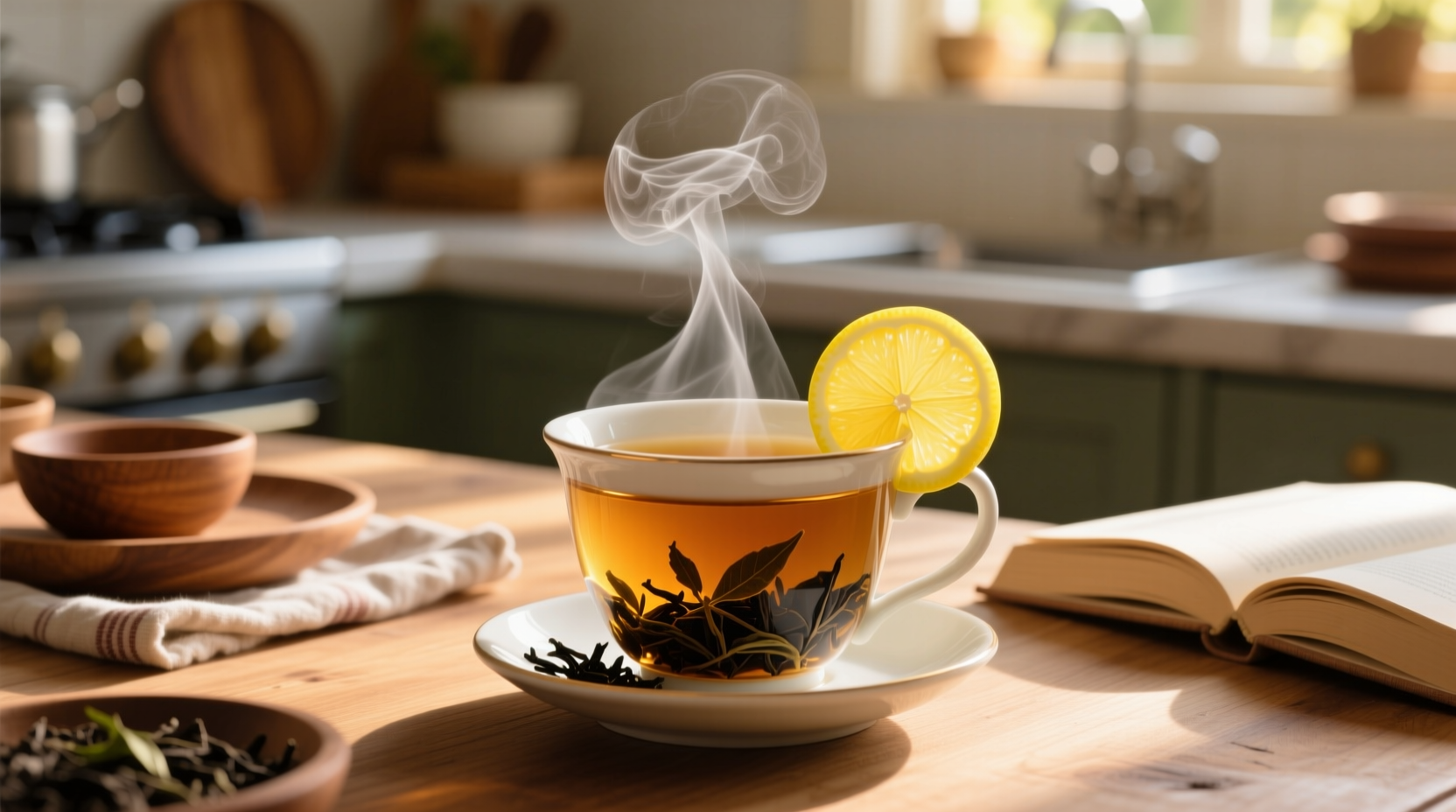If you've ever wondered what does Earl Grey taste like when brewed properly, you're experiencing one of tea's most recognizable flavor profiles. This classic black tea infusion offers more complexity than many realize, with layers that unfold as you sip. Understanding Earl Grey's taste characteristics helps you appreciate why it remains a global favorite for over 150 years.
The Core Flavor Profile of Earl Grey Tea
Earl Grey's distinctive taste comes from the addition of bergamot oil to black tea leaves. This citrus fruit, grown primarily in Calabria, Italy, creates the signature flavor that defines authentic Earl Grey. When properly brewed, you'll notice:
- Citrus dominance - Bright lemon-orange notes that refresh the palate
- Floral undertones - Subtle lavender-like hints from the bergamot
- Tea foundation - Smooth black tea base ranging from malty to brisk
- Finish - Clean, slightly tannic aftertaste that lingers pleasantly
According to the Tea Association of the USA, bergamot oil contains linalool and linalyl acetate compounds responsible for its distinctive citrus-floral aroma profile that differentiates it from other citrus fruits.
What Creates Earl Grey's Signature Taste?
The magic happens through the careful infusion of bergamot oil into black tea. Unlike artificial flavorings, authentic Earl Grey uses natural bergamot essential oil extracted from the rind of this unique citrus fruit. The oil absorbs into the tea leaves during processing, creating a harmonious blend where neither component overpowers the other.
Food scientists at the University of Reading have documented how the volatile compounds in bergamot interact with tea polyphenols, creating new flavor compounds during the curing process. This chemical marriage produces the complex profile that makes Earl Grey tea taste unique compared to simply adding citrus to plain black tea.

How Preparation Affects Earl Grey's Flavor
Your brewing technique significantly impacts how Earl Grey tastes in your cup. Consider these variables:
| Preparation Factor | Under-Prepared Effect | Optimal Result | Over-Prepared Effect |
|---|---|---|---|
| Water temperature | Weak, underdeveloped flavor | 200°F (93°C) - full flavor release | Bitter, harsh notes |
| Steeping time | Thin, watery taste | 3-5 minutes - balanced profile | Excessive bitterness |
| Tea quantity | Faint bergamot notes | 1 tsp per 8oz water - ideal ratio | Overpowering citrus |
Professional tea tasters note that water quality dramatically affects the final taste. Hard water can mute bergamot's floral notes while enhancing bitterness, while filtered water preserves the delicate balance that makes Earl Grey taste so distinctive.
Earl Grey Through the Ages: A Flavor Evolution
Earl Grey's flavor profile has evolved significantly since its creation in the early 19th century. Understanding this timeline helps explain why modern interpretations vary:
- 1830s - Original recipe used Chinese black tea with natural bergamot oil
- Early 1900s - Shift to Ceylon and Assam teas changed the base profile
- Mid-20th century - Artificial flavorings became common during shortages
- 21st century - Premium blends return to natural ingredients with tea variety experimentation
As documented by the Victoria and Albert Museum, the original Earl Grey formulation used Keemun black tea, which provided a smokier base that complemented bergamot differently than today's common Assam or Ceylon bases. This historical context explains why what Earl Grey tastes like today differs from its 19th century predecessor.
Comparing Earl Grey to Other Tea Varieties
Understanding Earl Grey's flavor becomes clearer when contrasted with similar teas. This comparison helps identify what makes Earl Grey taste unique among flavored teas:
| Tea Type | Primary Flavor Notes | Bergamot Presence | Best Served |
|---|---|---|---|
| Classic Earl Grey | Citrus-floral with black tea base | Strong, defining characteristic | Afternoon with lemon |
| Lady Grey | Milder citrus with lemon/orange peel | Moderate, blended with other citrus | Morning with milk |
| Breakfast Blend | Malty, robust black tea | None | Morning with milk |
| English Breakfast | Full-bodied, brisk black tea | None | Morning with milk |
When Earl Grey Might Not Taste Right to You
Certain conditions can alter how Earl Grey tea tastes in ways that might disappoint you. Recognizing these context boundaries helps set proper expectations:
- Low-quality blends often feature artificial flavorings that create a one-dimensional, perfume-like taste
- Stale tea loses its bergamot aroma, resulting in flat, dusty flavors
- Overheated water scalds the leaves, bringing out excessive bitterness
- Extended steeping (beyond 5 minutes) creates an astringent, unpleasant finish
Tea connoisseurs note that Earl Grey generally doesn't pair well with milk, as the proteins can bind with bergamot compounds and mute the distinctive citrus notes that define what Earl Grey tastes like at its best.
Discovering Your Perfect Earl Grey Experience
To truly appreciate Earl Grey's flavor complexity, try this professional tasting technique:
- Brew a proper cup using fresh, filtered water at 200°F for 3-4 minutes
- Smell the dry leaves first to detect bergamot intensity
- Observe the liquor color - golden amber indicates proper brewing
- Take a small sip and let it coat your palate before swallowing
- Notice the progression from initial citrus burst to tea foundation to finish
Many tea experts recommend enjoying Earl Grey without sweeteners initially to fully experience how Earl Grey tastes in its intended form. Once you understand the base profile, you can experiment with lemon wedges (never milk) to enhance specific flavor notes.
Exploring Earl Grey Variations and Their Taste Differences
Modern interpretations offer diverse flavor experiences while maintaining the core bergamot profile. Understanding these variations helps you select based on what Earl Grey tea tastes like to your palate:
- Classic Earl Grey - Traditional black tea base with pronounced bergamot
- Lady Grey - Milder bergamot with added lemon and orange peel
- Decaf Earl Grey - Similar profile with slightly muted flavors due to processing
- Green Tea Earl Grey - Lighter body with grassy notes complementing citrus
- Victorian Earl Grey - Often includes additional floral notes like cornflower
Specialty tea producers have begun experimenting with single-estate Earl Grey variations, where the terroir of the tea garden influences how Earl Grey tastes in subtle but noticeable ways. A Darjeeling-based Earl Grey, for instance, offers more floral notes than an Assam-based version's malty foundation.
Why Earl Grey's Flavor Endures
The enduring popularity of Earl Grey stems from its perfectly balanced flavor profile that appeals to both tea novices and connoisseurs. Unlike many flavored teas that taste artificial or one-dimensional, quality Earl Grey offers layered complexity where the bergamot enhances rather than masks the tea base.
When brewed properly, Earl Grey delivers that distinctive citrus-floral aroma followed by a smooth tea foundation and clean finish - creating a sensory experience that explains why this blend has remained popular for nearly two centuries. Understanding what Earl Grey tastes like helps you select quality blends and prepare them to maximize their distinctive flavor profile.
Does Earl Grey taste like regular black tea?
No, Earl Grey has a distinctive citrus-floral flavor from bergamot oil that regular black tea lacks. While it uses black tea as its base, the bergamot infusion creates a completely different taste profile with prominent lemon-orange notes and floral undertones.
Why does my Earl Grey taste bitter?
Bitterness usually comes from water that's too hot (above 205°F), over-steeping (beyond 5 minutes), or using too many tea leaves. Proper brewing with 200°F water for 3-4 minutes creates a smooth flavor without excessive bitterness.
Should Earl Grey taste like perfume?
No, authentic Earl Grey shouldn't taste like perfume. Artificially flavored versions often have this characteristic. Quality Earl Grey made with natural bergamot oil has a balanced citrus flavor that's refreshing but not overpowering or chemical-tasting.
Does Earl Grey taste good with milk?
Most tea experts recommend against adding milk to Earl Grey as it can mute the delicate bergamot notes. The proteins in milk bind with bergamot compounds, diminishing the distinctive citrus flavor that defines Earl Grey's taste profile.
How is Lady Grey different in taste from regular Earl Grey?
Lady Grey has a milder bergamot flavor with additional citrus notes from lemon and orange peel. It's generally less intense and more rounded than traditional Earl Grey, making it more approachable for those who find regular Earl Grey too strongly citrus-forward.











 浙公网安备
33010002000092号
浙公网安备
33010002000092号 浙B2-20120091-4
浙B2-20120091-4